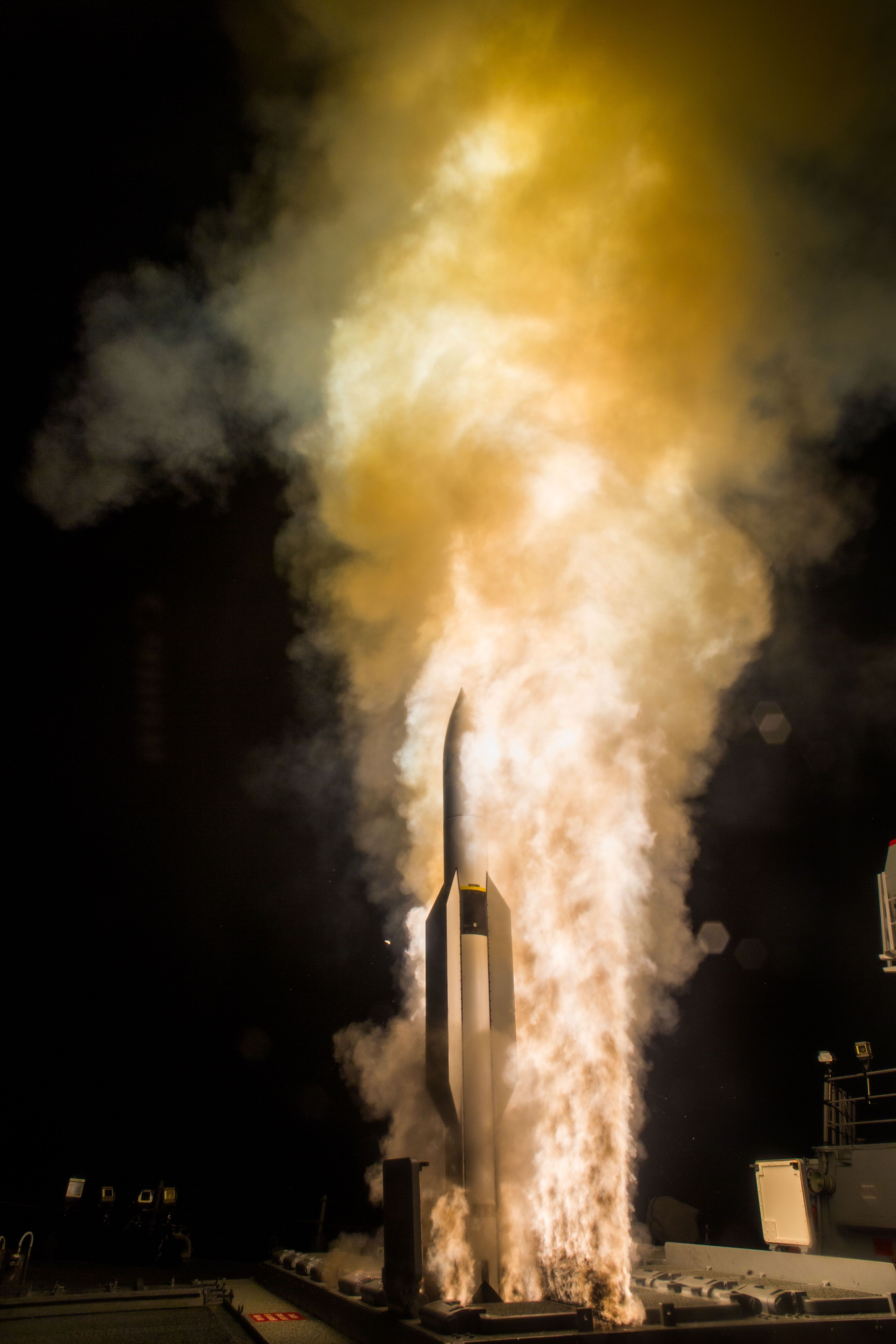The US Missile Defense Agency and Navy have test-launched two SM-6 missiles in a ballistic missile defense test. See the photos here.



RIP dear friend.
A giant in the worlds of both academia and policy, Drell died Wednesday, Dec. 21, at his home in Palo Alto. He was 90 years old.
“An accomplished physicist, his contributions to improve national and international security made our world a better place,” said Tom Gilligan, director of the Hoover Institution at Stanford in a statement. “We are especially grateful for Sid’s relentless dedication to eliminating the threat posed by nuclear weapons and know that his important work will continue to frame the issue.”
Dedicated to arms control.
Just another reminder that America’s supremacy in space is increasingly unsecured.

AP.


India is all set to test its Agni-V intercontinental ballistic missile (ICBM), capable of striking even the northernmost parts of China, in its final operational configuration from Odisha. Notedly, this will be fourth and the final test of nuclear-capable Agni-V. It will be tested for its full range, before Strategic Forces Command begins its user trials.
The country’s most formidable nuclear missile till now since it brings the whole of China and much more within its strike envelope, the three-stage Agni-V was earlier tested in “an open configuration” in April 2012 and September 2013.
The third test on Jan 30 2015 was done from a hermetically-sealed canister mounted on a Tatra launcher truck in “a deliverable configuration”.

With the ongoing number of China’s space mission, how important is this missile test that is believed to be capable of destroying enemy communications? If all goes according to plan, what will happen then? Find out what authorities have to say.
( Idf/Getty Images)
China is once again being put to the spotlight after it has revealed that they are preparing to launch their anti-satellite missile that is believed to have the ability of destroying satellites in space. Authorities of the said project says that this is definitely one of Beijing’s most potent asymmetric warfare weapons. one of Beijing’s most potent asymmetric warfare weapons. It was found that the US intelligence officials have already detected preparations for a test launch of the Dong Neng-3 which is due to take place at a military facility in central China. However, despite these information, riva; countries said that little is known about the missile and the satellite.

Glad that the author is highlighting the need for investment; however, the US government has had a quantum network since 1991. Wall Street, various overseas banks, ISPs, etc. well over a year to 2 years ago. And, tech has invested in QC for a decade or longer. So, the article raises the need for investing in QC; however, the investing is no longer experimental as it is now about the daily usage of this technology as well as planning for technical transformation that is coming in the next 5 to 7 years.
Researchers led by Lockheed Martin and IBM are pushing quantum computing prototypes and military applications.

John Glenn, who captured the nation’s attention in 1962 as the first American to orbit the Earth during a tense time when the United States sought supremacy over the Soviet Union in the space race, and who rocketed back into space 36 years later, becoming the oldest astronaut in history, died Dec. 8 at a hospital in Columbus, Ohio. Mr. Glenn, who in his post-NASA career served four terms as a U.S. senator from Ohio, was 95.
The death was confirmed by Hank Wilson, communications director at the John Glenn College of Public Affairs at Ohio State University. Mr. Glenn had a stroke after heart-valve replacement surgery in 2014, but the immediate cause was not announced.
Mr. Glenn was one of the seven original astronauts in NASA’s Mercury program, which was a conspicuous symbol of the country’s military and technological might at the height of the Cold War. He was not the first American in space — two of his fellow astronauts preceded him — but his three-orbit circumnavigation of the globe captured the imagination of his countrymen like few events before or since. Mr. Glenn was the last survivor of the Mercury Seven.

One of the oddest military drones aborning reinvents a stillborn technology from 1951. That’s because the unmanned aircraft revolution is resurrecting configurations that were tried more than a half century ago but proved impractical with a human pilot inside. The case in point: Northrop Grumman’s new Tern, a drone designed to do everything armed MQ-1 Predators or MQ-9 Reapers can, but to do it flying from small ships or rugged scraps of land – i.e., no runway needed.
“No one has flown a large, unmanned tailsitter before,” Brad Tousley, director of the Tactical Technology Office at the Defense Advanced Research Projects Agency (DARPA), Tern’s primary funder, said in a news release. The key word there is “unmanned.”
Back in 1951, when all sorts of vertical takeoff and landing aircraft ideas were being tried, Convair and Lockheed built experimental manned tailsitters for the Navy. Convair’s XFY-1 and Lockheed’s XFV-1, nicknamed “Pogo” and “Pogo Stick,” each had two counter-rotating propellers on its nose and was to take off and land pointing straight up. Convair’s Pogo had a delta wing and, at right angles to the wing, large fins. Lockheed’s Pogo Stick had an X-shaped tail whose trailing tips, like Convair’s wing and fins, sported landing gear.